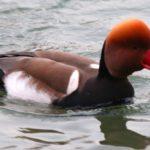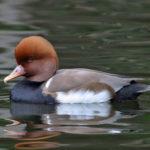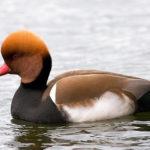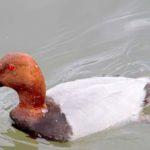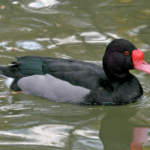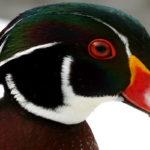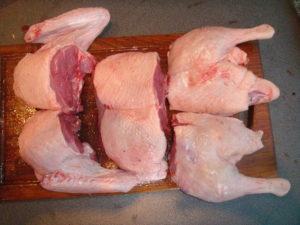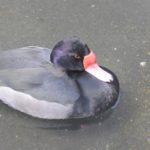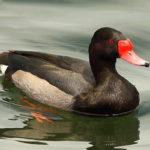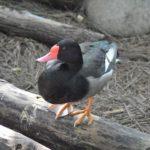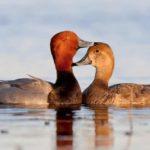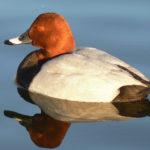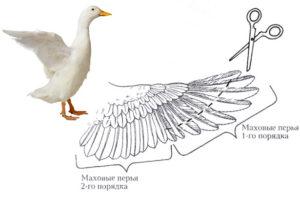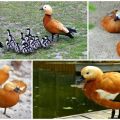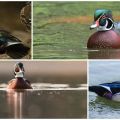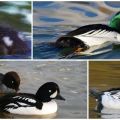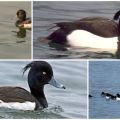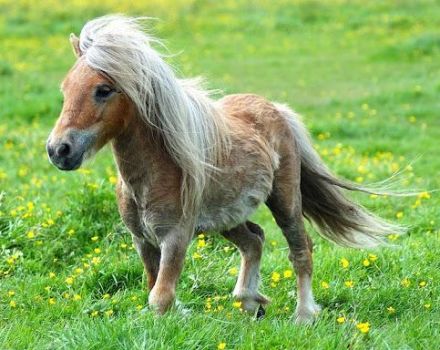Description and varieties of diving ducks, habitats and what they eat
The duck duck is so named because of its ability to dive and swim underwater, foraging for itself. There are several varieties of this wild duck. Species differ in feather color, lifestyle and characteristics. Consider a detailed description of the species of duck duck, where it lives in nature, how it lives and what it eats, how deep it can dive.
Duck description
Diving ducks live near swamps and in small calm rivers. Most common in North America, but also found in Asia and Africa. Diving includes several species of duck, united by a common feature - the ability to dive deep into the water for prey. The duck can not only dive, but also swims underwater. This feature allows birds to spend most of their time on the water. They also appear on land, but are vulnerable there, as they fly poorly. Other types of dives fly well, so they can be found more often on the shore.
Diving - ducks of medium size, smaller than the usual mallard (weight - 0.8-1.5 kg), with a compact body. Their head is round, large, with a long neck, and a large flat beak. The head may be tufted. The plumage color is different, typical for each species. In drakes it is brighter, in females it is more modest.
Varieties
There are 4 types of dives. They are named for their distinctive features of appearance, they can even determine which species the bird belongs to.
Red-nosed duck
The head of the drakes has a chestnut color, with a tuft, the iris of the eyes is red. The feather on the back and breast is black with green. The feathers of the uppertail, tail and large wing feathers are dark. The wings are covered with a feather of a light cream color. The wings have a white stripe with black edging. Females are brown. The beak of ducks of both sexes is deep red, narrow, the tip is lowered down. The inclination of the body is horizontal, the tail is inclined towards the water.
This duck weighs 1.7 kg and is considered a game bird. They are obtained for their meat and beautiful feathers, which are used for decoration. The meat of the red-headed duck is dark, with orange-colored fat.
Red eyed duck
This species of duck is named for its bright red iris. Wild representatives live in South America and Africa, in regions below the Sahara. They are non-migratory, nests are built in coastal thickets, incubation lasts 26 days.
Coloring: the head is black with green, the chest is purple, the body is covered with brown feathers with light green feathers.Males get this color after puberty, before this age drakes, like females, are inconspicuous, gray-brown. The bill and legs are black.
Red-eyed diving ducks weigh, on average, 1.3 kg, and the males are larger and look brighter than the females.
Pampas dive
The pampas dive inhabits the countries of Latin America, in the south-west of the Atlantic Ocean (Falkland Islands). It is found in salt lakes and in a domesticated form in ponds.
The feather on the body is silvery with white specks, a purple head and chest. In the light, feathers take on a pinkish tint. Belly is white, large wing feathers are white with black edging. The eyes are red, the head is small, round. The base of the beak and outgrowth are red, with a white center and black tip.
Redhead
The duck duck of this species is common in Europe, hibernates far from its habitats - in North Africa and the Middle East. Ducks can be migratory and resident.
In spring, the feather on the head and neck of the drake becomes bright red or light chestnut. The rest of the feathers are black. Females are brown-gray, they need inconspicuous plumage for camouflage when they sit on the nest. Red-headed ducks dive to a depth of 2 m and can be there for up to 20 seconds. They move slowly on land, take off from a run.
To what depth do they dive
Diving ducks can sink 2.5 m under the water. Since they live in shallow water bodies, this is enough to find food there. But if necessary, they can dive deeper and reach the bottom of the reservoir.
Habitat
Diving ducks live on rivers, reservoirs, lakes, wetlands. They don't go far from their places. Nests are built on an accumulation of dead reeds or in coastal thickets. The clutch contains, on average, ten eggs. Incubation in different species lasts from 26 to 33 days. Drakes raise offspring, teach ducklings to get food. The female can lay and hatch up to 3 clutches of eggs per year. Chicks begin to fly at 2.5 months. They also learn to dive at the command of the drake, this behavior protects the duck family from danger.

Diving food
Diving ducks feed on food they can find in the water. These are green aquatic plants, seeds and rhizome pieces. The food is aquatic insects, worms, small mollusks, larvae, fish roe floating in shallow water. Birds dive for insects and fish, for aquatic vegetation.
Food of animal origin in the diet of diving ducks is the main one, so their meat has a specific fishy smell.
During mating and moulting times, diving enrich the body with protein found in fish, crustaceans and shellfish. Ducks do not stay in the water all the time, they go ashore and bask in the sun. By the fall, they accumulate fat, which allows them to survive the cold and not always full winter.
Diving ducks are wild birds with beautiful plumage. They live in different parts of the world, are not domesticated, no breeds have been developed on their basis. But this does not prevent them from remaining decorative and game birds. The main difference between diving and other duck species is the ability to dive under water to get food. Ducks of these species are not protected, the population is not threatened with decline or extinction. Therefore, ducks with beautiful plumage can be found in nature.
